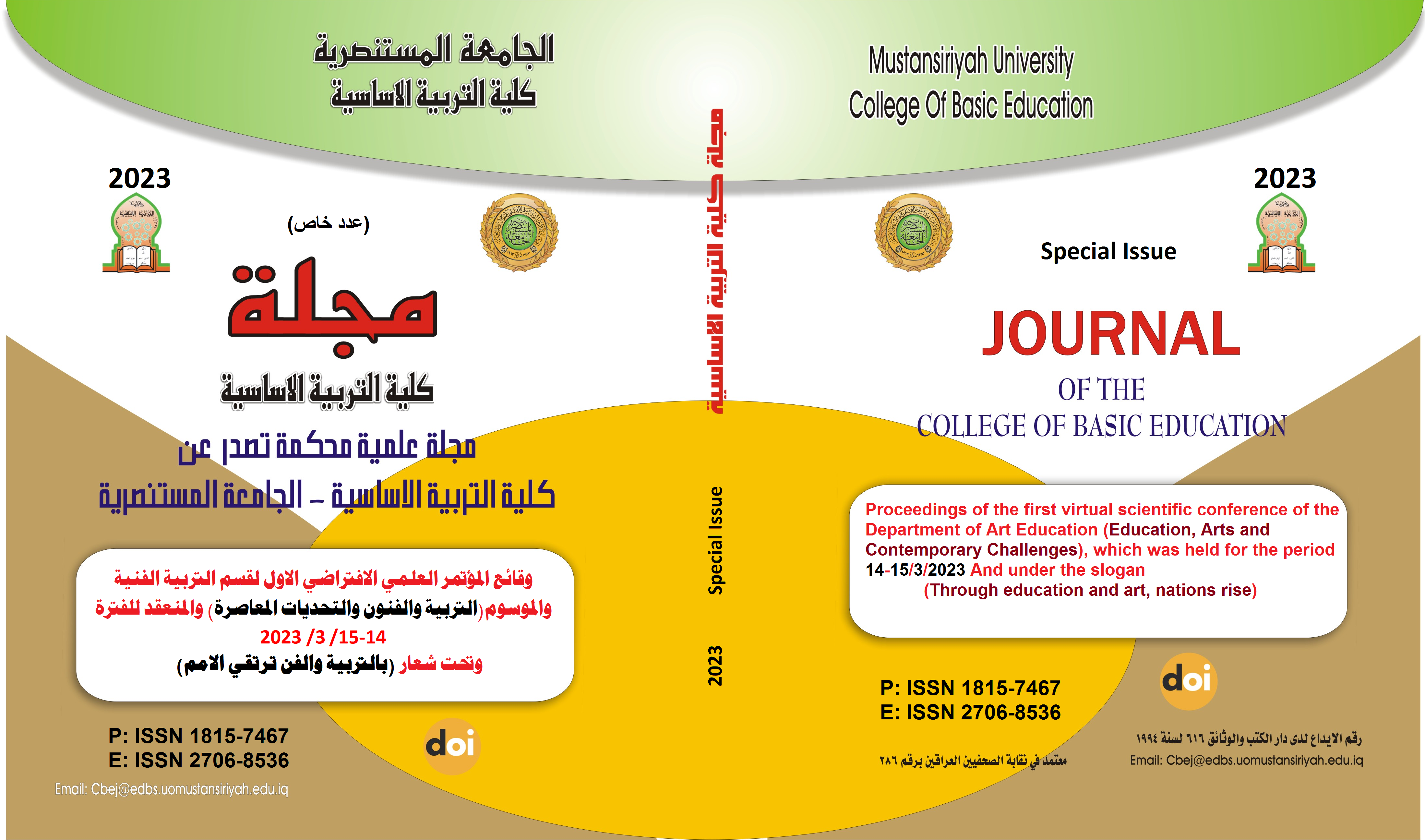فعالية القيم الجمالية والوظيفية كأداة تحليل المقررات الدراسية ( معهد الفنون التطبيقية انموذجا )
Main Article Content
Abstract
The courses fulfill the needs of the educational process and in several aspects, including (securing the objectives of specialization), (qualifying students with the required skills and crafts), (taking into account the application of materials in an aesthetic and creative vision) to achieve the required purpose, which is (delivering the material or information to the learner), (and the interaction between the material And the student recipient) to form scientific foundations characterized by good preparation and integrity of the content scientifically and educationally, in which all planned knowledge experiences are placed to make them more effective, especially in the field of applied arts to keep pace with industrial and economic variables in response to development and knowledge development that is characterized by quality in accordance with the standards of the educational process, through which the requirements of the labor market are achieved. It provides the student with the creative foundations for developing his artistic taste, and accordingly, and according to the specificity of the applied arts courses, they were divided into two axes, the first (aesthetic) achieved by understanding the material and understanding the content, and the second (functional) represented by the performance acts (discovery, analysis, implementation, production) to improve the educational experience and practice, the outcome of which is shown by sense. Innovative technical product. The research is concerned with studying the course standards in a way that gives it a ground and scientific foundations that reveal the function of work and the aesthetics of composition. However, there are a number of steps that illuminate the means for the course development process, which is monitoring and documenting the relationship between the function performed by the course and the aesthetic values associated with it, and finding a standard of beauty. To reach the intended goal and represent it as a creative structure to serve the artistic production, achieve equivalence and narrow the gap between the aesthetic and the functional performance, to raise the efficiency of the educational process in a harmonious harmony between theory and practice. Among the statistics revealing the effectiveness of the curriculum and improving its outputs and keeping pace with the requirements of cognitive development for all aspects of the educational process, where scientific and technological development has added a lot of modern means, which can be benefited from in preparing curricula at a high level of competence that is qualified to meet the challenges of the knowledge age, and among these developmental means Disclosure of courses planned for innovation Solutions, leading to the development of the level of educational performance, which contributes effectively to the treatment and development of the personality of the designer. The curricula are considered the means or the tool that expresses knowledge and skill, and whenever they are appropriate to specialization and consistent with technical and knowledge development, their achieved goals meet the needs of the educational process, especially in the field of applied arts. Therefore, the current research included four chapters, the first chapter of which included the research problem and its importance in developing the collection of information and concepts for the materials taught by students to achieve the goal of the research in setting standards by which the efficiency of the courses can be assessed, its needs, problems and creative ability. The research problem ended with the following questions: What are the aesthetic and functional criteria for applied arts? ? (What is the specificity of the courses in applied arts?) (What is the effectiveness of the functional and aesthetic foundations in the courses of applied arts?) The second chapter also included two sections dealing with the first topic (functional performance and aesthetic values in applied arts) and dealing with the second topic (courses) to reach the chapter The third is chosen by the research community, which is the vocabulary of the curriculum of the departments of the Institute of Applied Arts, study materials, and analysis of samples within statistical and graphic tables. Observation is based on knowing the amount of functional and aesthetic compatibility, and to achieve the fourth chapter of the results, the most important of which are: Disparity according to the standard ratios that were developed to determine the aesthetic and functional aspects and according to the difference of the selected samples. The conclusions included a scale of aesthetic characteristics in the applied arts. It is characterized by elements that differ from the functional ones in the applied arts. Combining them requires knowledge of related sciences and knowledge. It also included recommendations, proposals and a list of sources
Article Details

This work is licensed under a Creative Commons Attribution-ShareAlike 4.0 International License.
